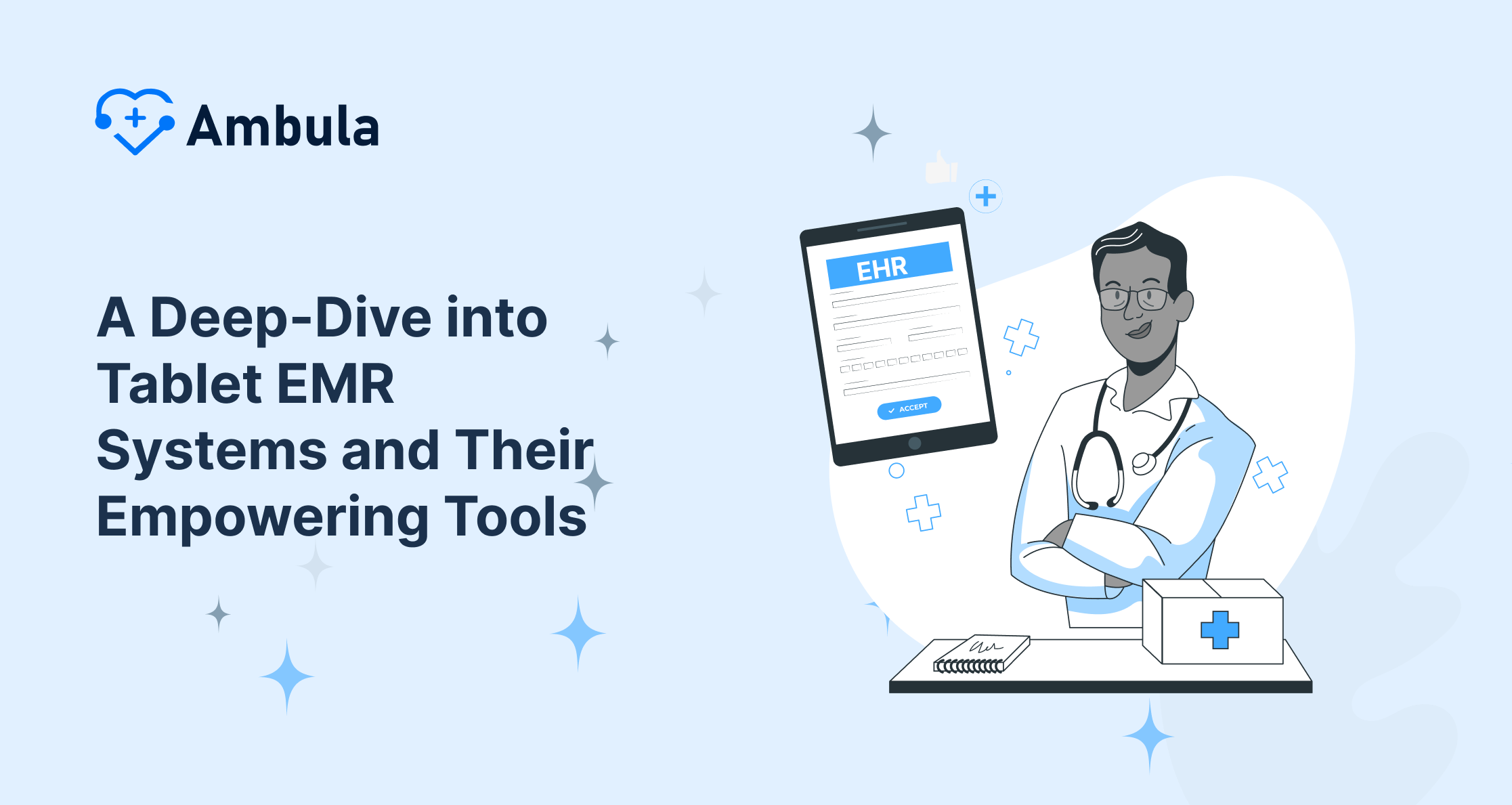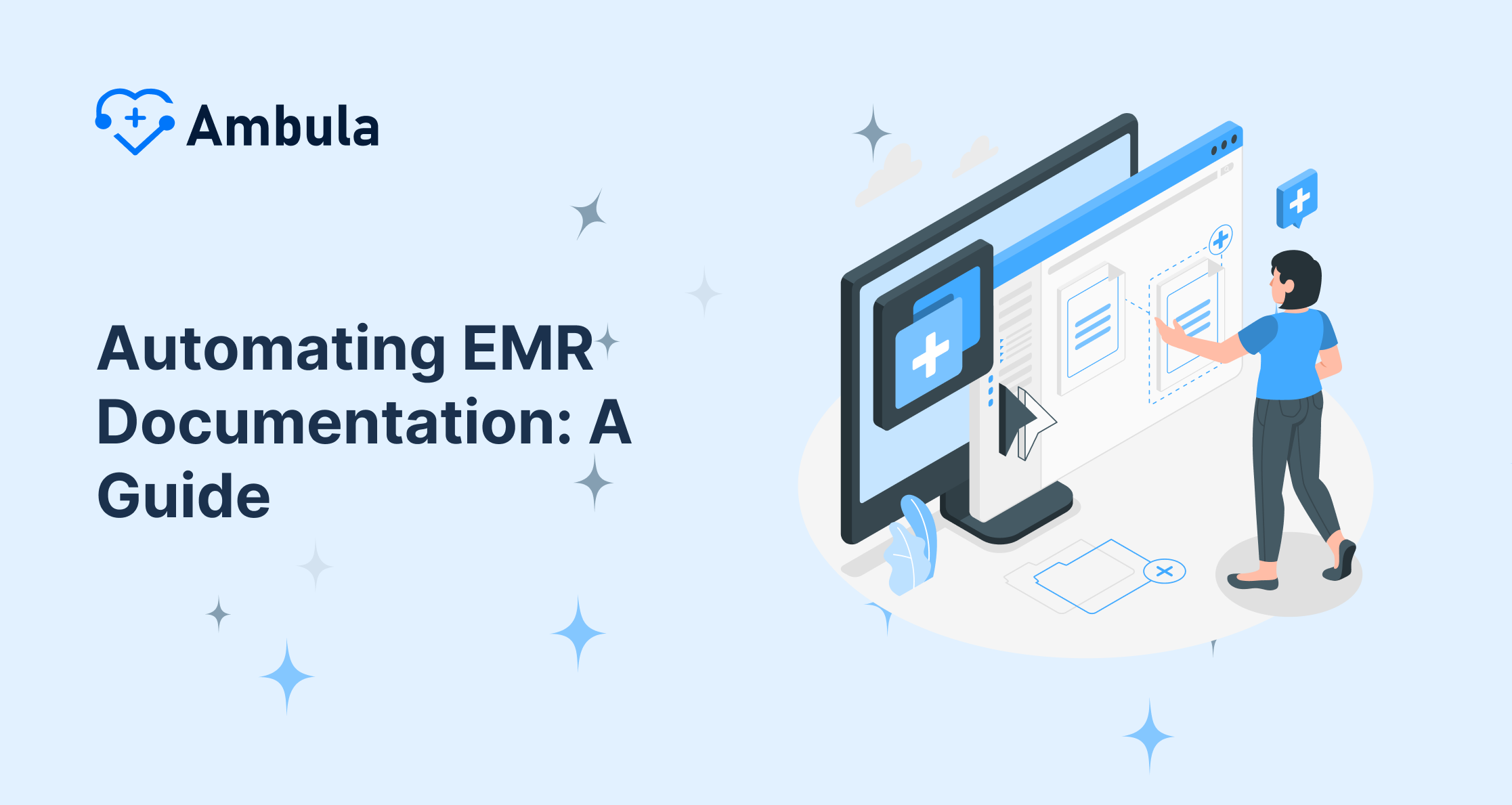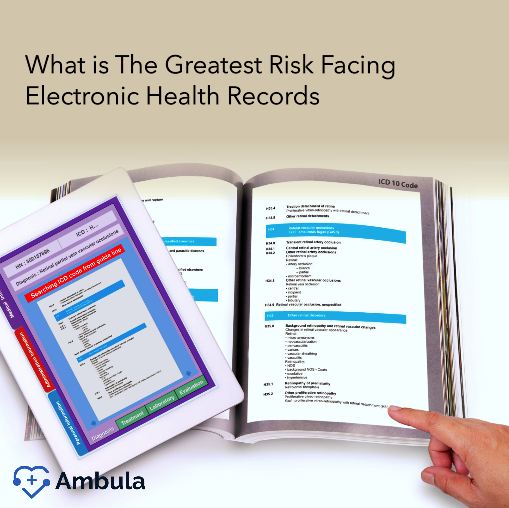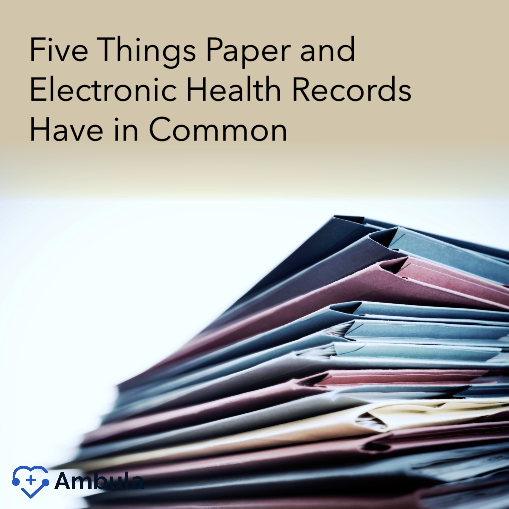The Advent of Meaningful Use
In the early 2000s, the U.S. healthcare system began a big change to use technology to improve patient care. This led to the start of the Meaningful Use program, a key plan to speed up the use of Electronic Health Records (EHRs) in hospitals and clinics across the country. Meaningful use in healthcare means using EHRs in smart ways to boost quality, safety, and effectiveness while cutting down on health differences.
Led by the Centers for Medicare & Medicaid Services (CMS) and the Office of the National Coordinator for Health Information Technology (ONC), this forward-thinking program set out to create baseline requirements for sharing clinical patient information. These requirements would make it easier for healthcare providers, insurers, and patients to communicate, building a more connected and productive healthcare system.
The main goals of Meaningful Use covered many areas and had a big impact. They tried to improve teamwork between doctors and public health groups, pushing for a complete approach to healthcare. Also, the program focused on ways to prevent health problems, putting patients’ health first and changing from fixing issues after they happen to stop them before they start. Maybe the most crucial part was that Meaningful Use wanted to help create strong standard ways to share data, setting up the basics for a healthcare system where everything works together better.
To get more people on board, CMS and ONC rolled out some pretty sweet money deals. They gave these perks to doctors and hospitals that started using Certified Electronic Health Record Technology (CEHRT) and showed they were following the well-thought-out Meaningful Use rules. This smart move sped up how fast people started using EHRs pushing healthcare into a new age where digital tools made things run smoother and put patients first.
The Three-Stage Roadmap
To facilitate a smooth transition, Meaningful Use was strategically segmented into three progressive stages, each building upon the foundations laid by its predecessor:
Stage 1 (2011-2012): Laying the Groundwork
The inaugural stage focused on establishing the fundamental requirements for the electronic capture and sharing of clinical data. Key objectives included enabling patients to access electronic copies of their health information, thereby fostering transparency and engagement.
Stage 2 (2014): Advancing Clinical Processes
Building upon Stage 1, Stage 2 emphasized leveraging CEHRT for enhanced care coordination and the seamless exchange of patient information. Thresholds for criteria compliance were elevated, introducing more stringent guidelines for clinical decision support, care coordination, and patient engagement.
Stage 3 (2016): Improving Outcomes
The culminating stage prioritized the utilization of CEHRT to drive tangible improvements in health outcomes. Initiatives encompassed the protection of personal health information, e-prescribing, clinical decision support, computerized provider order entry, patient-provider access, coordinated care through patient engagement, health information exchange, clinical data registry, and case reporting.
This incremental approach not only facilitated a smoother adoption curve but also mitigated the risk of overwhelming healthcare providers with an avalanche of changes.
The Core Objectives
At its core, Meaningful Use was underpinned by five cardinal objectives, as outlined by the Centers for Disease Control and Prevention:
- Enhancing Quality, Safety, and Efficiency while Reducing Health Disparities
- Increasing Patient Engagement
- Improving Care Coordination
- Expanding Population and Public Health Initiatives
- Ensuring Robust Privacy and Security Safeguards for Personal Health Information
Guided by these priorities, CMS and ONC formulated comprehensive standards that EHRs were mandated to meet, thereby promoting the widespread adoption of CEHRT. Adherence to these guidelines was a prerequisite for eligibility to receive federal incentive funds.
While participation in the Meaningful Use program was technically voluntary, failure to comply with the established criteria could potentially result in reimbursement-related penalties, underscoring the program’s significance.
The Legislative Impetus: HITECH Act
The genesis of Meaningful Use can be traced back to the Health Information Technology for Economic and Clinical Health (HITECH) Act of 2009, a legislative endeavor that catalyzed the adoption of EHRs across the healthcare ecosystem. Notably, Subtitle D of the HITECH Act addressed the privacy and security concerns associated with the electronic transmission of health information, fortifying the civil and criminal enforcement of the HIPAA rules.
Under the auspices of the HITECH Act, eligible organizations participating in the Medicare EHR Incentive Program were required to achieve Stage 1 Meaningful Use compliance by 2014 to qualify for incentive payments. Subsequent deadlines were established and, at times, extended for Stages 2 and 3, underscoring the program’s evolutionary nature.
The Transition to Promoting Interoperability
As the healthcare landscape continued to evolve, CMS recognized the need to realign the Meaningful Use program to better reflect contemporary priorities. In April 2018, the agency rebranded the initiative as the “Promoting Interoperability Programs,” a nomenclature that encapsulated the overarching goals of enhancing interoperability, fostering flexibility, and empowering patient access to health information.
Under the new rules, all eligible hospitals participating in the Medicare and Medicaid Promoting Interoperability Programs were mandated to adopt the 2015 Edition of CEHRT for EHR reporting periods commencing in 2019. Additionally, CMS finalized changes to specific measures, including the removal of those deemed ineffective in promoting interoperability and the electronic exchange of health information.
These transformative modifications were foreshadowed by the introduction of the Medicare Access and CHIP Reauthorization Act (MACRA) of 2015, which consolidated existing CMS quality programs, including Meaningful Use, the Physician Quality Reporting System, and value-based payment modifiers, into the Merit-Based Incentive Payment System (MIPS). This consolidation was a strategic move to enhance the quality of care delivery across the healthcare continuum.
Navigating the Audit Process
As a safeguard against potential misuse or abuse of the incentive program, CMS implemented an audit process, subjecting 5-10% of eligible professionals to rigorous scrutiny. Physicians who encountered issues during an audit were advised to communicate directly with the designated MU audit contractor, Peter Figliozzi of Figliozzi & Company, CPAs P.C.
One of the most prevalent challenges faced by physicians during audits was demonstrating compliance with the “yes/no” requirements related to attestation of successful security risk analysis completion. To alleviate these concerns, CMS provided comprehensive online guidance and resources.
Appealing Adverse Decisions
In recognition of the complexities inherent in the audit process, CMS established an informal appeals mechanism for physicians who were denied incentive payments, deemed ineligible for the program or received unfavorable audit determinations. The appeals process required physicians to file a claim and submit supporting documentation within specific deadlines:
- Failed Audit Meaningful Use: 30 days from the date of the adverse audit determination letter
- Failed Reporting Meaningful Use: March 31
- Eligibility: March 31
It is noteworthy that all appeal decisions were considered final, underscoring the importance of meticulous preparation and adherence to guidelines.
Safe Harbor Rules: Donated EHRs
To alleviate the financial burden associated with EHR implementation, the U.S. Department of Health and Human Services (HHS) Office of the Inspector General (OIG) and CMS introduced companion rules that permitted physicians to accept donations of nearly free EHR technology (requiring a minimum 15% co-pay) from certain healthcare entities without violating the Stark and Anti-Kickback statutes.
Initially scheduled to expire on December 31, 2013, this exception/safe harbor was extended through 2021 in response to advocacy efforts by organizations like the American Medical Association (AMA). While the AMA had pushed for a permanent exception, the extension provided welcome relief for physicians grappling with the high costs of EHR adoption.
The revised rules also incorporated several notable changes, including:
- Exclusion of laboratories from the list of entities permitted to donate EHR technology
- Updated definitions of software considered interoperable for donation purposes
- Clarification of restrictions on limiting the use, compatibility, or interoperability of donated items or services
- Removal of the requirement related to electronic prescribing capability
The exclusion of laboratories addressed concerns regarding the potential misuse of donated items to secure inappropriate referrals, reflecting the administration’s commitment to safeguarding the integrity of the healthcare system.
Advocating for Usability and User-Centered Design
While the Meaningful Use program facilitated the widespread adoption of EHRs, it also highlighted the need for improved usability and user-centered design (UCD) in EHR product development. The AMA firmly believed that EHR technology should enhance, rather than impede, physician workflows, patient care, care coordination, practice efficiencies, and decision-making processes.
Unfortunately, the rapid implementation of EHR technology often led to the acquisition of tools that were not optimized for the needs of patients or physicians. As a result, EHRs could sometimes hinder efficient care delivery by obscuring critical information or presenting usability challenges that compromised effective, efficient, and safe utilization.
To address these concerns, the AMA advocated for the incorporation of robust UCD principles in the ONC’s certification process for EHR products. This user-centric approach, which involves analyzing and integrating user requirements from the initial development stages, could significantly improve usability and increase physician satisfaction with EHRs.
In a collaborative effort with MedStar Health, the AMA identified key issues with EHR certification and the need for better UCD integration in health IT product design. This partnership exemplified the organization’s commitment to driving meaningful improvements in EHR usability, ultimately benefiting both healthcare providers and patients.
Privacy and Security: Safeguarding Patient Data
Ensuring the privacy and security of patient health information was a paramount concern within the Meaningful Use framework. In compliance with both HIPAA and MU requirements, physicians were obligated to conduct or review a comprehensive security risk analysis at least once during each program year.
The methodology employed for this analysis was contingent upon various factors, including the practice’s size, complexity, capabilities, risk profile, and associated costs. Conducting this analysis provided valuable insights into the vulnerabilities within a practice’s health IT infrastructure, enabling proactive measures to mitigate potential threats.
It is crucial to note that a health IT system encompasses more than just the EHR component, underscoring the importance of a holistic approach to risk assessment and mitigation.
To assist healthcare providers in building tailored compliance processes, the AMA offered a range of free resources through the AMA Education Center, eligible for AMA PRA Category 1 Credit™. Additionally, HHS provided materials specifically designed to aid small-to-medium-sized practices in achieving compliance, such as the “HHS EHR Contracts: Key Contract Terms for Users to Understand” guide.
Ongoing Advocacy Efforts
Throughout the evolution of the Meaningful Use program, the AMA remained a steadfast advocate for enhancing its workability for physicians. Persistent efforts were made to encourage CMS to establish more reasonable reporting requirements, measurement thresholds, and overall flexibility, ensuring that all physicians who desired to participate could do so without undue burden.
As a result of significant advocacy by the AMA, CMS implemented several changes to the Stage 2 requirements, reducing the overall number of requirements and introducing exceptions for certain measures. Notably, following years of advocacy, CMS removed the computerized physician order entry (CPOE) and clinical decision support (CDS) measures from the Medicare MU program and the Advancing Care Information (ACI) component of the Quality Payment Program (QPP).
However, it is important to note that the Medicaid MU program continues to include CPOE and CDS measures, reflecting the nuanced and evolving nature of the regulatory landscape.
While CPOE and CDS functionality will remain integral components of EHRs, the elimination of specific numerical thresholds and order entry requirements empowers physician practices to develop policies around these features in a manner that harmonizes with their unique workflows and care delivery processes.
The AMA’s advocacy efforts extended beyond programmatic modifications, encompassing a wide range of initiatives aimed at enhancing the Meaningful Use program’s effectiveness and alignment with the needs of healthcare providers and patients alike.
Ambula: Empowering Healthcare Professionals with Innovative Solutions
At Ambula, we are committed to providing cutting-edge Electronic Medical Record (EMR) solutions that empower healthcare professionals to deliver exceptional patient care while seamlessly adhering to regulatory requirements like Meaningful Use.
Our innovative EMR platform is designed with a user-centric approach, prioritizing intuitive interfaces, streamlined workflows, and robust interoperability to facilitate efficient data exchange and care coordination. By leveraging the latest technologies and industry best practices, we strive to alleviate the administrative burdens often associated with EMR adoption, allowing physicians to focus on what truly matters: providing high-quality, compassionate care to their patients.
As a trusted partner in the healthcare ecosystem, Ambula remains at the forefront of industry developments, continuously enhancing our solutions to align with evolving regulations and standards. Our commitment to usability, security, and privacy ensures that our EMR solutions not only meet but exceed the rigorous Meaningful Use criteria, empowering healthcare organizations to thrive in an increasingly digital landscape.
We invite you to explore our comprehensive EMR offerings and discover how Ambula can revolutionize your practice, enabling you to navigate the complexities of Meaningful Use with confidence and ease.
For more information on meaningful use criteria and all other issues related to EHR systems, contact the Ambula team at (818) 308-4108. Now discover how many EHR systems are there?





